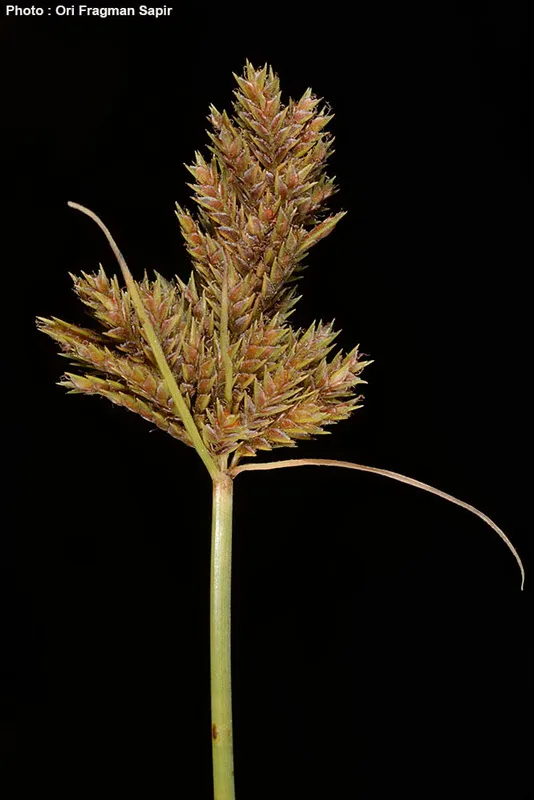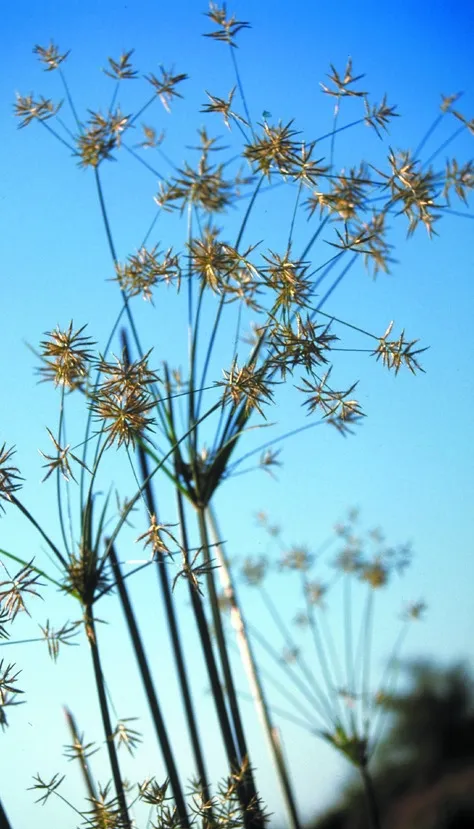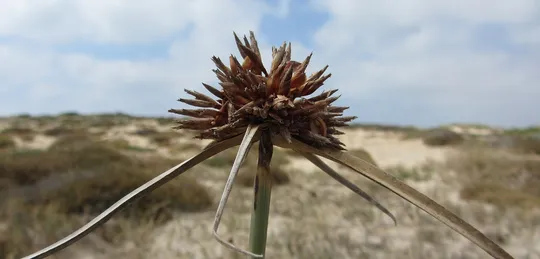Papyrus Sedge, Paper Reed
Cyperus papyrus
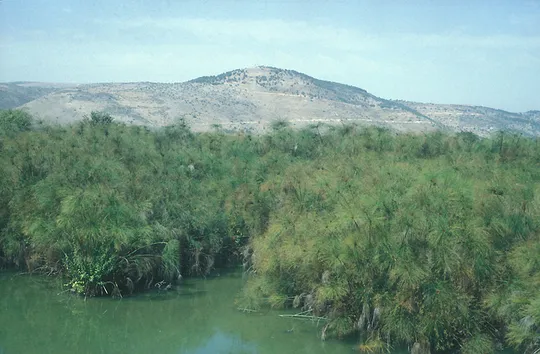
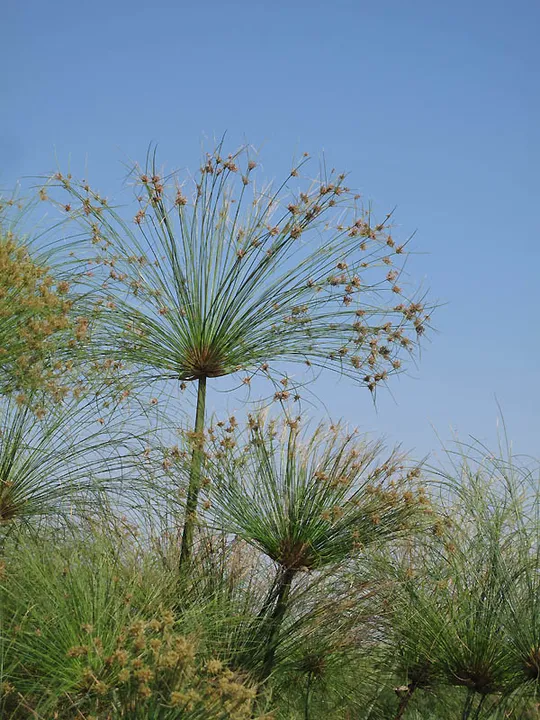
Cyperus papyrus was once very common along the Nile, but it is now extinct in Egypt. In the Bible references to "Cyperus” are all in the context of water, in the books of Exodus, Isaiah and Job.
The dry stalks were used for making mats. Papyrus once was the only raw material used for producing "writing paper". The paper was made from strips of the core of the stalk which were pressed while wet. In ancient Egypt, papyrus was also used for food, making utensils, shoes and building boats.
Cyperus papyrus once grew in six regions, but survived only in three. In the Philistine Plain the plant was collected only once in 1925 near Petah Tikva. This site could be connected to the Yarkon Stream population, which existed until the late 1970s at the Yarkon springs (Moshe Agami). In the Sharon C. papyrus grew in many wetlands - Kvara marshes, Hadera, Batih pond, Tel Zomera and Ya'ar Pond (Ata). There are many dried specimens in the Jerusalem Herbarium collection from the 1920s to the 1970s, although subsequently it survived at only on one site – the Wadi Poleg Reserve. C. papyrus was also found in a water canal near Tel Zomera (1983) but it is unclear whether that individual did not originate from a garden. At the remaining two sites a small number of plant clumps were counted in 1995. In the Acre Valley a single site near En HaMifrats was found in 1961. In the Kinarot Valley the plant grew in the Bet Tsayda valley, in the Jordan River Park and at an interesting site in the Amud Stream estuary (observation from 1991). In the Hula Valley C. papyrus dominates a large area of the Hula Reserve, and a small population also exists in the Hula Lake, En Te'o, En Shu'ah and Bnot Ya'akov Bridge.
The edges of rivers and lakes. On extensive marsh areas it creates peat soil, on which it grows well.
For the genus, see Cyperus corymbosus.
Professor Feinbrun notes in the Flora Palaestina that the expert on Cyperus papyrus distinguished a unique variety in the Israeli populations “Palestinian variety” but according to her the variability in the plants growing here does not justify awarding it an independent status.
• The number of Cyperus papyrus sites was significantly reduced (from 39 in the past to 24 today) because of the general loss of wetlands in Israel, a trend that is likely to continue. In fact, it is now found only in the Hula Reserve. Most of the lost sites are on the coastal plain: wetlands continue to disappear in this area.
• The number of plant clumps in most sites is small (1-5), except for the Hula.
• Most sites are included in nature reserves, but the plants are still endangered.
• This is the only Cyperus species among ones found in the wild in Israel that is used in gardening. Consequently there is uncontrolled collecting of C. papyrus in nature for gardens, mainly on the coastal plain. On the other hand, there are papyrus plants that have probably “escaped” from gardens to nature.
Cyperus papyrus populations should be strictly supervised at all its sites on the coastal plain and in the Jordan River system (exept for the the Hula) to prevent the uprooting of plant clumps for use in gardens. The coastal populations in the Wadi Poleg Reserve should be monitored. The species should be reintroduced to the Kvara swamp and its habitat should be rehabilitated.
Cyperus papyrus is found in East African countries: Sudan, Ethiopia and in equatorial African countries including Guyana and Congo. It also grows on the Island of Malta, Sicily and in Israel. Most researchers believe that the plant was brought to these sites during the Roman period to produce papyrus paper. Its presence in Egypt is doubtful: in 1882 C. papyrus was not found in Egypt, and therefore is lacking from one of the important vegetation books of the Middle East (Boissier 1882). It also did not appear ion the new flora of Egypt, published in 1956 (Tackholm, 1956). Only after intensive searches was a single site discovered in Egypt in 1960s. The Hula Valley populations are the northernmost in the world.
Cyperus papyrus is a tropical Cyperus species whose northern distribution limit is in the Middle East. It is the best-known and important Cyperus in the world. The species has almost completely disappeared from the Sharon region and is found in one large concentration only in the Hula Reserve. The main threats for the continued survival of its populations are damage to the wetlands and picking for use in gardens and for other purposes.
Current Occupancy Map
| 1000 squre meter pixel | 5000 squre meter pixel | 10000 squre meter pixel | |
|---|---|---|---|
| number of observations | 0 | 0 | 0 |
| in total pixels | 0 | 0 | 0 |
| Family | Cyperaceae |
| Classification | On the endangered species list |
| Ecosystem | Humid |
| Chorotype | Tropical |
| Conservation Site | Hula Nature reserve and Wadi Poleg |
| Rarity |
1
1
6
|
|---|---|
| Vulnerability |
0
4
4
|
| Attractiveness |
0
3
4
|
| Endemism |
0
0
4
|
| Red number |
1
4.7
10
|
| Peripherality | S |
| IUCN category | DD EW EX LC CR EN VU NT |
| Threat Definition according to the red book | Endangered |
 Based on:
Based on:
